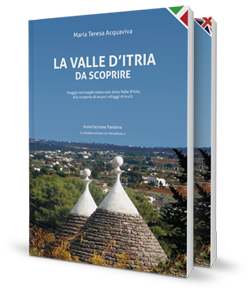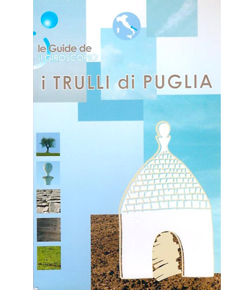Text translated by Google Translate.
"The gift of San Giorgio" is a tradition of Locorotondo to remember that in 1650 the patron Saint George saved the city from looting.
It was the year 1650 when in Locorotondo “the mayor Angelo Morelli started the tradition of the “Gift to St. George”, offering the Chapter 10 silver ducats and ten pounds of wax to restore the chapel of the Saint and to illuminate it at any time of day and night. " These words are taken from an essay by the historian Vittorio De Michele in which he tells the beginning of a tradition in Locorotondo dedicated to the Patron Saint Giorgio, an anniversary much awaited bythe residents.
A bit of history
Why San Giorgio a Locorotondo? In a historical document of Henry VI of Swabia, emperor of the Holy Roman Empire at the time, issued in 1195, it is written that among the possessions of the Benedictine monastery of Santo Stefano in Monopoli there was also an locum qui dicitur Rotundus where olive trees, vines were grown , rich in water and where there was also a church dedicated to San Giorgio ... et in eo ecclesiam Santi Georgii. San Giorgio was one of the many Eastern saints whose cult had certainly spread a few centuries earlier throughout the Apulian area dominated by the Byzantines. Eastern saints painted in many caves also by monks who fled from iconoclastic persecutions in the East, who lived in cave villages in the countryside. Locorotondo already existed in the 12th century, however it is assumed that that hill had already been inhabited for centuries before. The present Valle d'Itria was a "Middle Ehart" when Puglia was disputed between the Lombards in the north and the Byzantines in the south. The south of Puglia, even with the subsequent dominations, Normans and Swabians, remained impregnated with Greek culture, especially for what concerned the religiosity expressed with the worship of Eastern saints. Among them also San Giorgio to whom a cave was dedicated on the hill where Locorotondo stands as a place of worship, a cave previously used, perhaps, for pagan cults. Between the 14th and 15th centuries a church-chapel was built on that ancient cave, always dedicated to San Giorgio, in a built-up area that had already assumed the size of a village, with a resident administration and clergy. Between 1578 and 1579, a more sumptuous church was built on the same site which incorporated the ancient medieval church-chapel. At the turn of the eighteenth and nineteenth centuries, the current Mother Church of San Giorgio was built, at a time when the population in Locorotondo increased extra moenia, gradually in the surrounding countryside, forming many rural agglomerations that are now known as Contrade , until the mid-twentieth century populated by farmers mainly dedicated to viticulture. It is curious to know that the name Giorgio, of Greek origin, means "peasant", obviously pure coincidence. So in good and bad fortune for centuries San Giorgio has watched over and still watches over the locorotondesi, later supported in the seventeenth century by San Rocco, who traditionally saved the place from the plague.
A miracle is attributed to St. George which occurred in the year 1648. At that time the Spanish viceroy was in Naples.The Spaniards to cope with the huge war expenses imposed many taxes throughout the kingdom, increasingly impoverishing the population. The spark of popular discontent broke out in Naples with a riot in Piazza del Mercato. Tommaso Aniello, called Masaniello, managed to transform the riot into revolution against the rulers of which he himself was a victim, however. Masaniello's fame spread throughout the Kingdom and had some emulators as an effect. In some cases, many local lords took advantage of these popular riots, pretending to be on the side of the people, manipulating the rebels for personal interests. This was what happened on the Murgia dei Trulli, where in this sense the protagonist was the Count of Conversano Giangirolamo II Acquaviva d'Aragona, known as the Guercio di Puglia. Martina Franca (near Locorotondo)also had her Masaniello, called Capodiferro but named Antonio Montanaro. He led the rioters against the Duke of Martina Franca Francesco I Caracciolo, owner of a great fiefdom which also included Locorotondo at the time, a fief which bordered precisely that of Count Acquaviva d'Aragona of Conversano. The rioters led by Capodiferro to save their lives fled Martina Franca and found refuge in Conversano in the county of Giangirolamo II Acquaviva, bitter enemy of Duke Caracciolo. Thus from rebels in favor of the people and against the abuses of the rulers, the Capodiferro clan turned into a gang of criminals who, in the pay of Count Giangirolamo II, put the countryside and some inhabited centers under fire.
The gift to San Giorgio
On Christmas Eve of 1648 he was ordered to Capodiferro and his gang by the Count of Conversano to plunder Locorotondo. The evildoers with the stairs managed to climb over the city walls and make devastations, looting and killings. The people, however, managed to resist and ward off a total defeat. This rescue was soon attributed to the fury of the people in San Giorgio and a procession was made to thank him. To commemorate that night, just two years later, in 1650, “The gift to San Giorgio” was instituted, a procession in which the civil authorities led by the mayor participated who, when they reached the church, offered the keys of the city, sums of money and other gifts for sustenance of the church. After the unification of Italy, the procession was also enriched by the participation of the Società Operaia di Mutuo Soccorso (a Secular Confraternity), together with local landowners, the mayor and members of the city government. At the beginning of the twentieth century a struggle between two popular factions, beduini and senussi, also ended up weighing on the gift ceremony. Each faction in fact founded its own association consisting of workers, who demanded a place in the procession. The contrasts, born for various reasons, also resulted in violent episodes. The climate between the two factions did not subside and caused the gift to cease for several years, a prolonged interruption since the First World War. It was at the end of the war that the Chapter to reconcile the city divisions forced the various Associazioni Operaie (secular Confraternities) to enter the church following the gift only after having publicly "made peace". In fact, in the ritual of 22 April a symbolic kiss of peace is re-proposed between the flags of the workers' associations.
For further information, it is advisable to read the paragraph The gift to San Giorgio contained in an essay by Vittorio De Michele entitled The Chapter clergy in the historical events of Locorotondo, in the book “The Church of San Giorgio Martire in Locorotondo”, by various authors - Locorotondo 2004.












